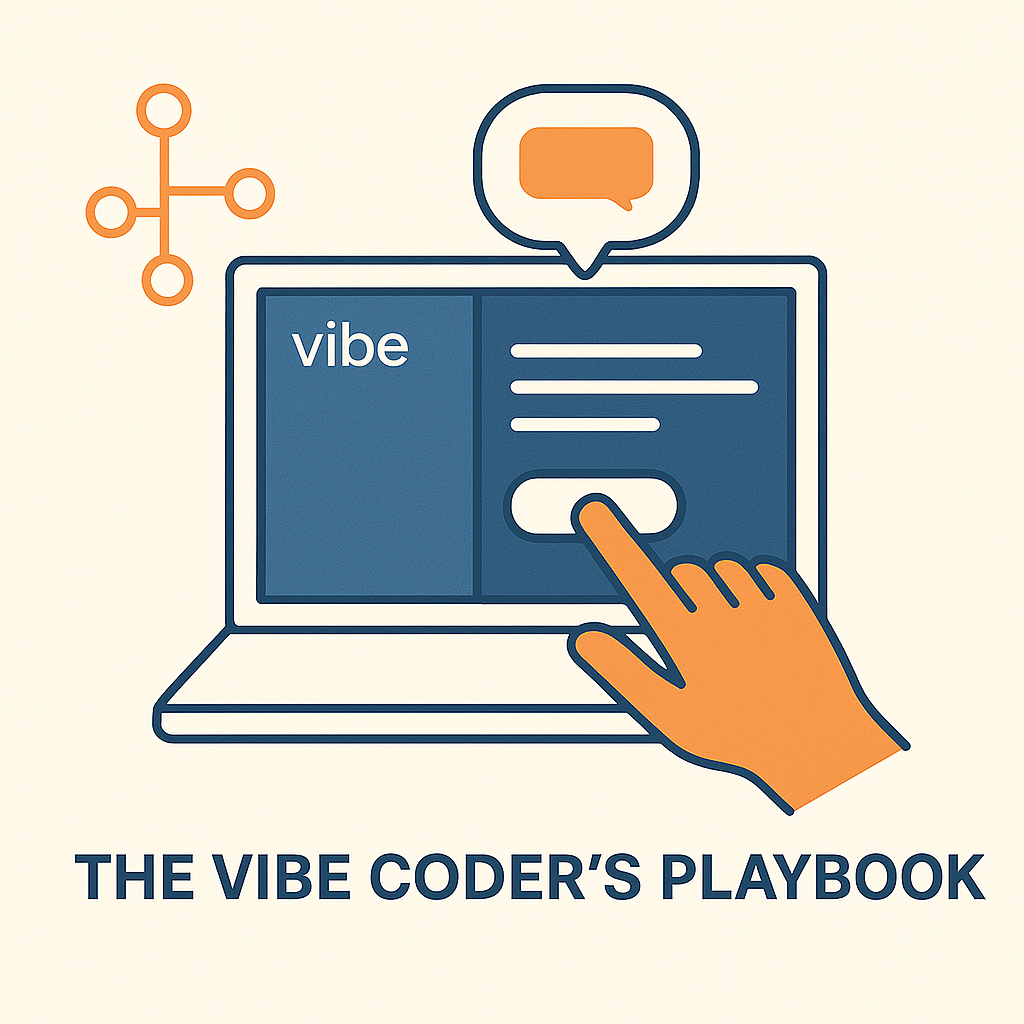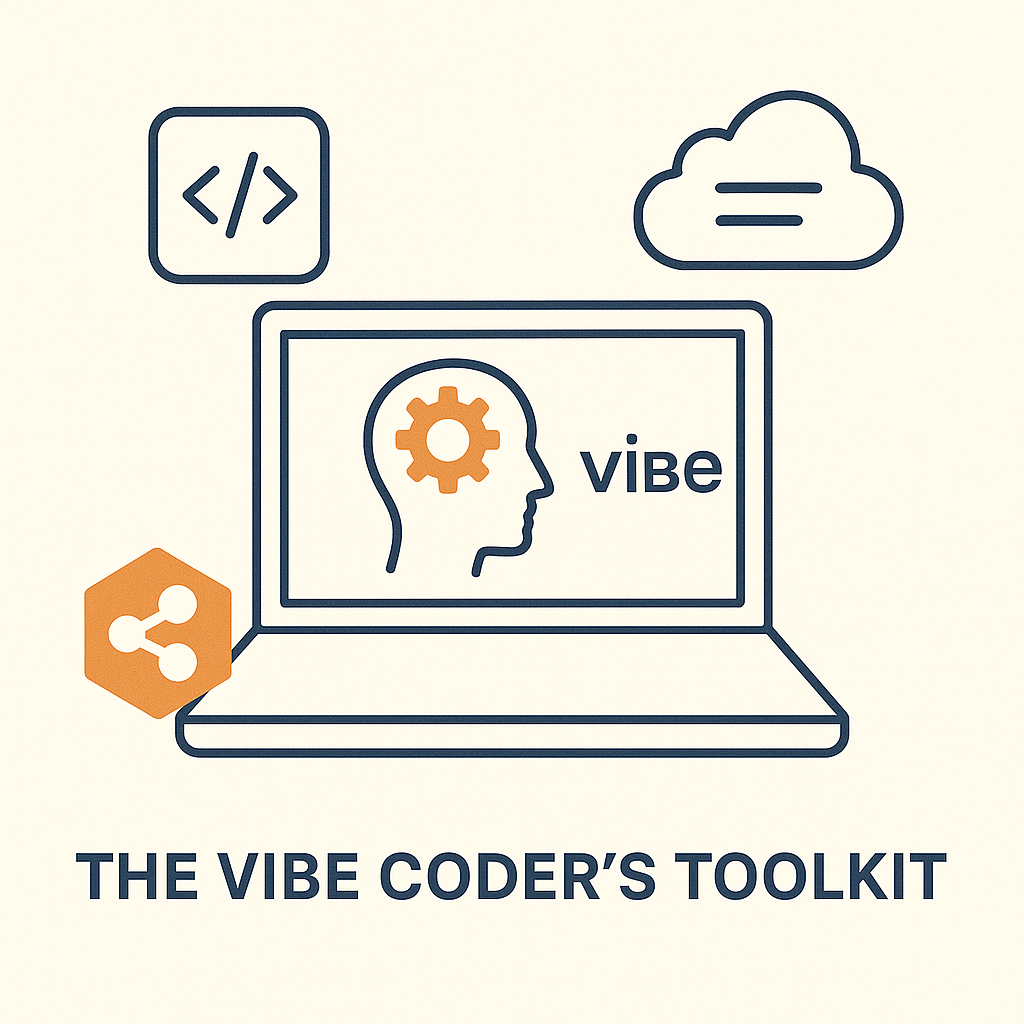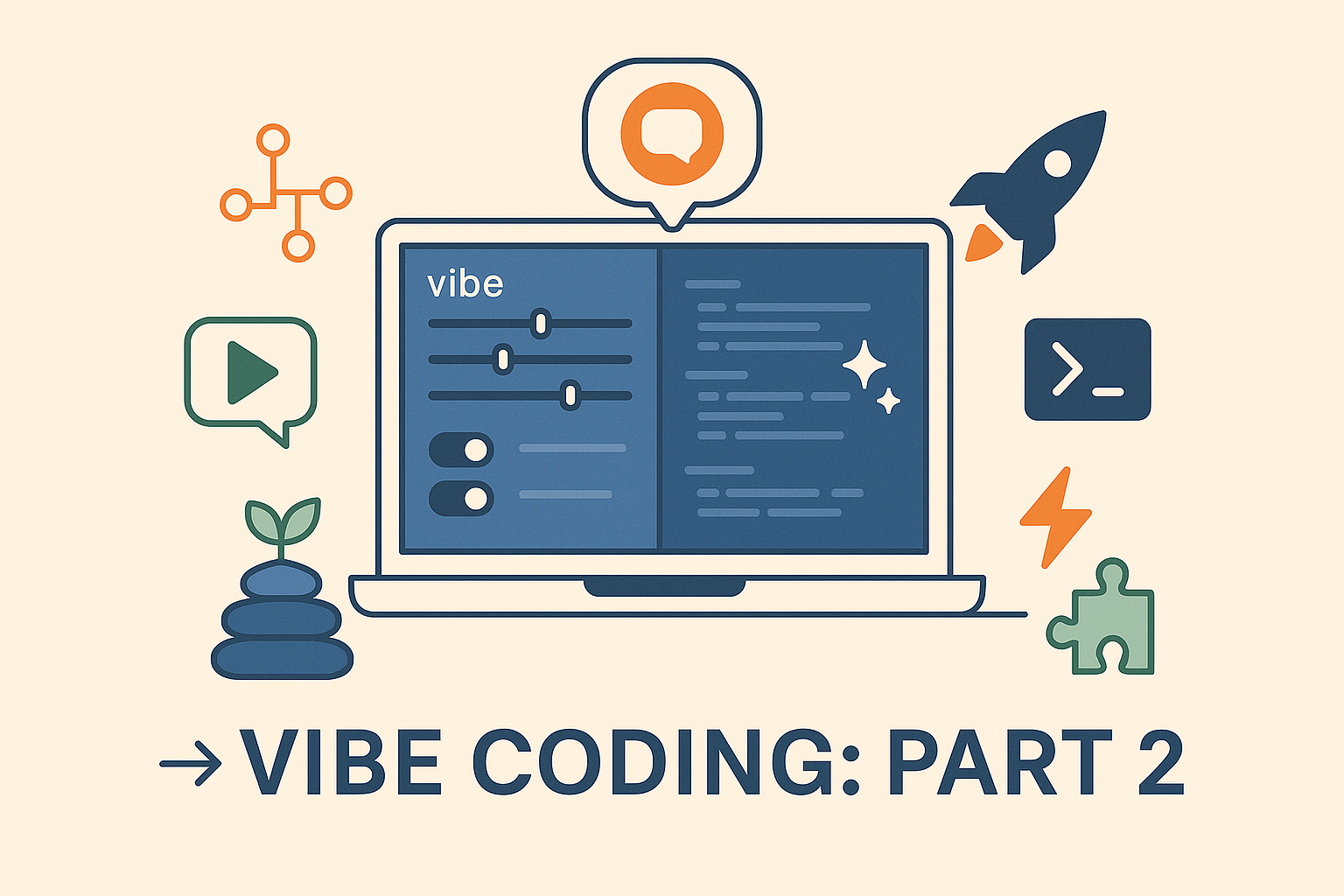In our last post, we explored the revolutionary idea of the Vibe Framework, a paradigm shift that allows non-technical founders to build software by guiding an AI with natural language. The promise is clear: go from idea to functional product faster than ever before. But as a founder, you're a builder at heart, and you need to know how.
This post is your practical "how-to" guide. We’ll break down the actionable steps of Vibe Coding, placing a strong emphasis on mastering prompt engineering—the core language of this new development paradigm. This isn't about memorizing complex commands or syntax. It’s about learning to communicate your creative intent with precision and clarity. Think of this as your playbook to get off the sidelines and into the game.
Step 1: Defining Your Vision – The "Design Before Code" Philosophy
Before you even think about writing a prompt, you must have a clear vision. The biggest mistake you can make is approaching a powerful AI assistant with a vague idea. An AI is a phenomenal tool, but it is not a mind reader. Your job is to provide the "why" and the "what" before the AI delivers the "how."
This first step is about establishing a precise and concise blueprint for your project. This means defining:
The "Why": The specific problem your product aims to solve. For a food delivery app, this isn't just "deliver food." It's "reduce meal prep time for busy professionals by offering a curated, healthy menu from local chefs."
The "For Whom": Your target audience. Be specific. Are they solopreneurs, busy parents, or remote teams? This context helps the AI understand the user's pain points and design a solution that truly resonates.
The "What": The core, essential features. An MVP isn't the final product. It's the simplest version that can prove your core hypothesis. List only the features that are absolutely necessary to test your idea. For a recipe app, this might be "user accounts, recipe submission, and a homepage display"—not a fully-fledged social network.
The "Vibe": This is where you bring your creative intent to the forefront. Vibe Coding champions a "design before code" philosophy. It’s highly beneficial to start with something tangible—a theme, a color scheme, or a brand image. You don't need a professional designer. Tools like Figma or even simple AI-generated mockups can serve as excellent visual starting points. Make concrete design decisions early on, such as selecting a font style, choosing a UI kit or component library (e.g., Tailwind, MUI), and defining a color palette. This early clarity is vital for preventing visual inconsistencies and ensuring alignment on the visual and functional direction of your app.
Step 2: Mastering Prompt Engineering – The Language of Creation
Prompt engineering is the fundamental language of Vibe Coding. Every truly effective prompt comprises three essential components. Think of them as the three pillars of a strong command.
The Three Pillars of a Great Prompt:
Clear Instruction: This is the precise command you give the AI. It should be unambiguous and leave no room for guesswork.
Bad Prompt: "Write code for a website." (Too vague).
Good Prompt: "Create a simple HTML/CSS landing page for a coffee shop called 'Mountain Brew.' Include a header with the shop name, a brief description section, and a footer with fictional contact info." (Specific, with clear requirements).
Helpful Context: This provides any background information the AI needs to understand the request fully. The more context you provide, the more tailored and accurate the output will be.
Bad Prompt: "Make it responsive." (The AI doesn't know for what purpose).
Good Prompt: "Create a secure login page with two-factor authentication for a SaaS application. The app is being built with Next.js and Supabase. Please use a modern, minimalist UI consistent with our design system." (The AI now understands the technology stack and the aesthetic goal).
Specified Output Format: This tells the AI how its response should be structured. This is critical for ensuring the code is easy to integrate and use.
Implicit: "Create a chart showing the data." (This leaves the format open to interpretation).
Good Prompt: "Using the provided JSON data, generate a bar chart. Return the code as a single React component using the Chart.js library." (This guarantees a specific, usable output).
Advanced Prompting Techniques for Founders:
Beyond the basics, several key techniques can significantly enhance your interactions with the AI, making you a true "Vibe Master."
Zero-Shot Prompting: The simplest form. You ask the AI to perform a task without providing an explicit example. This works well for straightforward requests like "Generate HTML and Tailwind CSS for a responsive navigation bar."
One-Shot and Few-Shot Prompting: You provide one or more examples of the desired output pattern before asking the AI to apply it to a new task. This is incredibly effective for style transfers or ensuring specific formatting, like a database schema. You might provide an example of a user table schema and then ask the AI to create a new
productstable in the same style.Chain-of-Thought Prompting: This is a powerful technique for complex problems. You encourage the AI to break down the task into logical, step-by-step reasoning by prompting it to "think step-by-step." This often yields more accurate and robust responses for multi-part questions, such as building a series of interconnected API routes.
Role Prompting: You assign a specific persona or role to the AI to tailor its tone, style, and content. For a founder, this is invaluable. You can say, "Act as a senior full-stack developer specializing in Next.js and Supabase. Your task is to..." This ensures the AI's output is not just correct, but also professional, secure, and aligned with industry best practices.
Visual Communication: With advanced multimodal models, you can leverage images and screenshots to visually clarify your intent. You can upload a simple sketch of a user interface with notes scribbled on it and say, "Generate the code for this layout." This is a game-changer for founders who think visually but lack the technical vocabulary to describe their ideas.
The overarching philosophy of "describe, don't implement" means you are essentially defining the architecture and desired behavior of your application primarily through natural language. Well-engineered prompts implicitly guide the AI towards specific architectural patterns and design choices.
Step 3: The Conversational Loop in Action – A Practical Example
Now, let's put it all together. This iterative cycle is the fundamental workflow of Vibe Coding. Let's imagine you want to build a simple recipe-sharing app.
Phase 1: Describe the Goal You start with a high-level objective: "Create a Next.js application (App Router) with user authentication powered by Supabase. The main feature should be a recipe submission form that allows a user to submit a recipe with a title, a list of ingredients, and instructions. The submitted recipes should be displayed on a public homepage."
Phase 2: AI Generates Code or Blueprint The AI interprets your request and produces initial code for the core application structure, including the Supabase setup, authentication pages, and a basic homepage. It might even provide a detailed blueprint outlining the file structure and component hierarchy.
Phase 3: Execute and Observe You run the generated code and test the functionality. You notice a few things:
The login and signup work. Great!
The recipe form is there, but the ingredients field is a single text box, not a list as you imagined.
The submitted recipe data is being saved to the database, but it's not being displayed on the homepage correctly.
Phase 4: Provide Feedback and Refine This is where the iterative dialogue takes place. You go back to the AI and say:
"The recipe form is good, but the ingredients field needs to be a list that a user can add multiple items to. Please update the code for the form component to handle a list of ingredients instead of a single text input."
"The data from the database is not showing on the homepage. Can you please generate the data-fetching logic and the component to display all recipes from the Supabase database on the homepage?"
You continue this loop, providing specific feedback to refine the code until the feature is complete, functional, and aligns perfectly with your desired outcome. This is how you take a high-level concept and build it out, one conversational step at a time.
Step 4: Structured Development with Vibe – Beyond a Single Feature
Vibe Coding is not just for building isolated features; it’s for building a complete, functional product. Once your wireframes provide a clear visual roadmap, you can use AI to:
Build a Functional Prototype: Use tools like CodeSandbox to simulate core user interactions and demonstrate basic user flows for immediate feedback. The AI can generate the boilerplate code for these prototypes in minutes.
Plan Lean Architecture: The AI can even assist with foundational architectural decisions. You can prompt it to "suggest a file/folder structure for a scalable Next.js application" or "outline the state management strategy for our recipe app." This ensures your product has a foundational structure that allows for future expansion without being overly rigid.
Prepare the Development Environment: Get your project ready for launch. AI can help with initial setup, such as configuring Git for version control, setting up code formatters and linters, and preparing development and test configurations for a smooth process.
The "Vibe Coding" phase is then actively using the AI to generate and refine the actual code, guided by your architecture and design principles, implementing the conversational loop you just learned.
By following this playbook, founders can harness the full power of the Vibe Framework to efficiently translate ideas into functional software, even with limited technical backgrounds. The next and final blog post in this series will explore the essential tools and ecosystem that power this journey, so you know exactly which platforms and technologies to use to get started today.






No comments yet
Be the first to share your thoughts on this article!